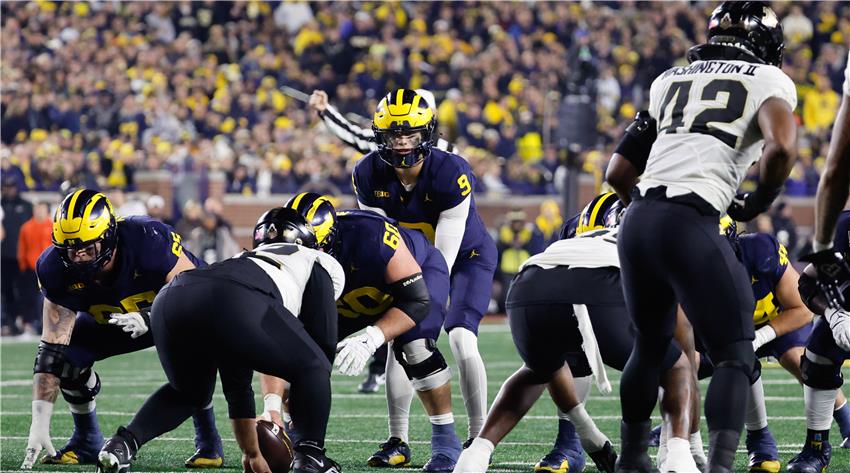
Strategic Reasons NFL Teams Choose to Trade Up or Down During the Draft
Factors Influencing NFL Draft Trades
NFL teams employ various strategies to trade up or down during the draft, aiming to optimize their rosters. Decisions to trade are influenced by team needs, player evaluations, and draft dynamics. One example is the Tampa Bay Buccaneers' approach in the 2024 NFL Draft. General Manager Jason Licht emphasized the importance of preparation for different scenarios. Licht stated that the Buccaneers use a chart to assess potential actions as the draft unfolds, helping them avoid rash decisions. In 2020, they traded up one spot to secure tackle Tristan Wirfs, a move that paid off as he became an All-Pro player.
Similarly, the Minnesota Vikings made two trades in the first round of the 2024 NFL Draft. They traded up to acquire Michigan's J.J. McCarthy and Alabama's edge rusher Dallas Turner. These trades addressed key positions and were part of their broader strategy. In contrast, the New England Patriots, under the direction of scouting head Eliot Wolf, demonstrated flexibility in their trading strategy. Wolf expressed an openness to trading up or down based on the opportunities presented during the draft. This flexibility allowed the Patriots to adapt to the draft dynamics and address their roster needs effectively.
Research from the Center for Sports Analytics at Samford University underscores the importance of middle-round picks, specifically those in Rounds 3-5, in a team's long-term success. Teams that perform well in these rounds generally perform better on the field. The New England Patriots, despite not performing well in the early rounds, rank highly in middle-round picks, which contributes to their league-leading total wins.
Assessing the Value of Draft Picks
The value of draft picks has been a subject of discussion for years. The "Jimmy Johnson" Trade Value Chart from the 1990s and the "Analytics" Trade Value Chart from 2024 illustrate the worth of each draft pick. For example, the first overall pick is valued at 3000 points, while the third overall pick is valued at 2200 points. These charts help teams assess the value of potential trades and make informed decisions. Understanding these values is crucial for teams deciding whether to trade up or down. For instance, a team might trade down if they believe they can obtain a high-quality player later while gaining additional picks.
The Tampa Bay Buccaneers' 2020 trade to secure Tristan Wirfs highlights the importance of understanding draft pick values. By trading up, they were able to secure a player who has since made a significant impact on their roster. Conversely, teams that accumulate more picks by trading down may enhance their depth and have more opportunities to find valuable players in the later rounds.
Strategic Approach to Draft Trades
NFL teams must prepare for various scenarios during the draft. This preparation involves evaluating team needs, assessing player potential, and understanding the draft's dynamics. For example, General Manager Jason Licht of the Tampa Bay Buccaneers emphasized the importance of being ready for different scenarios. This approach helps teams avoid making hasty decisions and allows them to capitalize on opportunities as they arise. The Minnesota Vikings' trades to acquire J.J. McCarthy and Dallas Turner in the 2024 NFL Draft illustrate this strategic approach. By targeting specific players to address key positions, the Vikings aimed to build a stronger team for the future.
Similarly, the New England Patriots' flexibility in trading up or down, as expressed by Director of Scouting Eliot Wolf, allows them to adapt to the draft dynamics and address their needs effectively. This strategy has contributed to their success in the NFL, as evidenced by their high ranking in middle-round picks. According to research, teams that excel in middle-round picks tend to perform better on the field. This finding underscores the importance of a strategic approach to draft trades.
Betting on the NFL Draft
Betting on the NFL draft has gained popularity as bettors can wager on various aspects, such as predicting the first overall pick, order of player selections, and Over/Under bets on draft positions. For example, in the 2025 NFL Draft, Colorado's Shedeur Sanders is the favorite to go No. 1, with odds of +380, followed by Georgia's Carson Beck at +450. The online sports betting market is growing, driven by factors like convenience, accessibility, and diverse betting options. In 2023, this market was projected to grow to $242 billion, with further growth anticipated. Popular sports for betting include basketball, boxing/MMA, and tennis. To participate in sports betting effectively, one must follow certain strategies, such as how to bet on sports by managing money wisely, sticking to popular betting options, and using live betting. Following expert guidance and conducting thorough research can also increase the chances of winning.
Conclusion
NFL teams' use of the Jimmy Johnson and Analytics Trade Value Charts helps them make informed decisions regarding draft trades. The first overall pick is valued at 3000 points, while the third overall pick is valued at 2200 points. These charts illustrate the worth of each draft pick and aid teams in assessing the value of potential trades. This understanding allows teams to make strategic decisions, like trading up to secure a coveted player or trading down to accumulate more draft capital. As the dynamics of the NFL draft continue to evolve, teams that effectively leverage these tools and strategies will be better positioned for long-term success. Balancing immediate roster needs with future potential is key to optimizing draft outcomes and building a competitive team.
